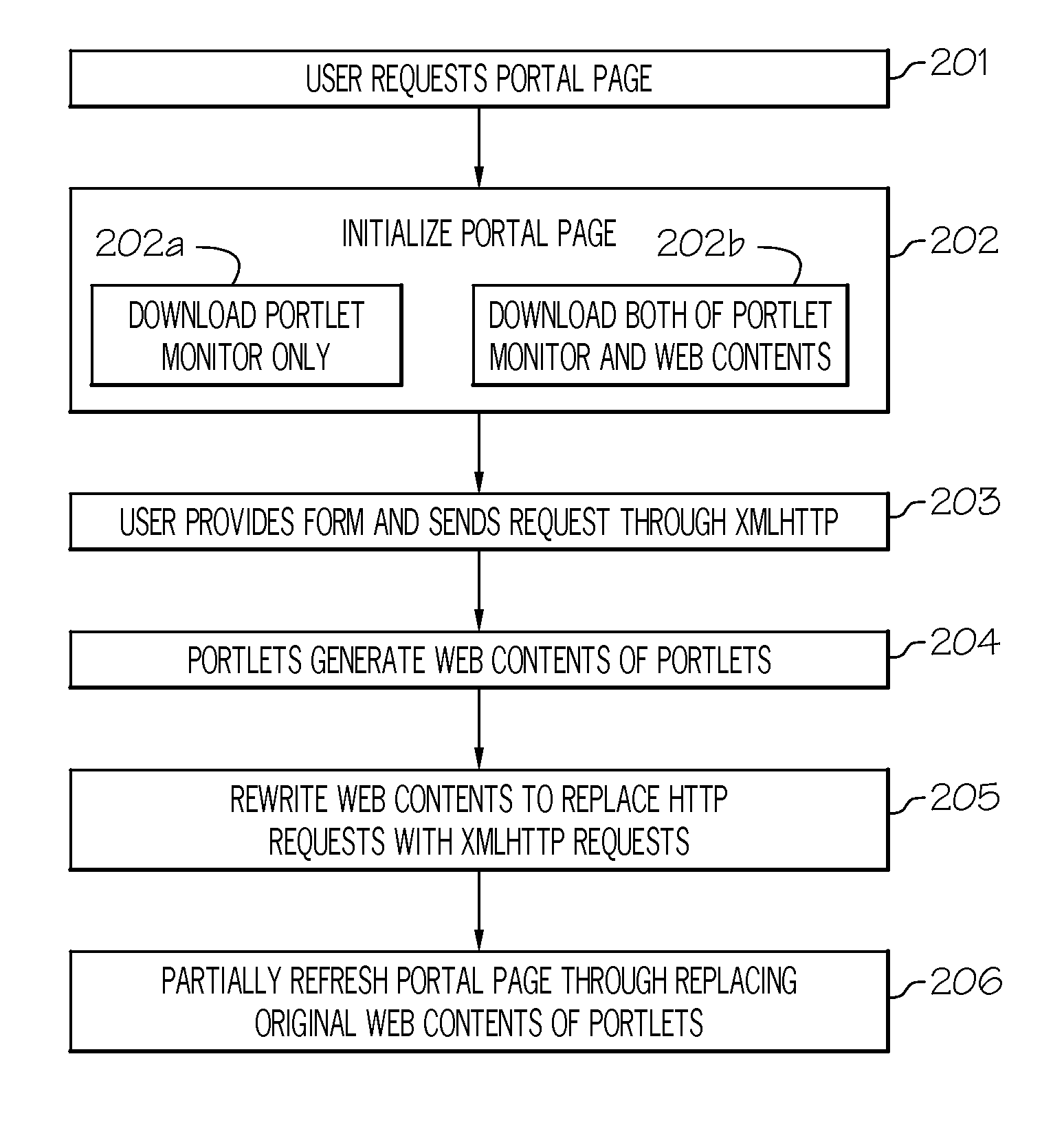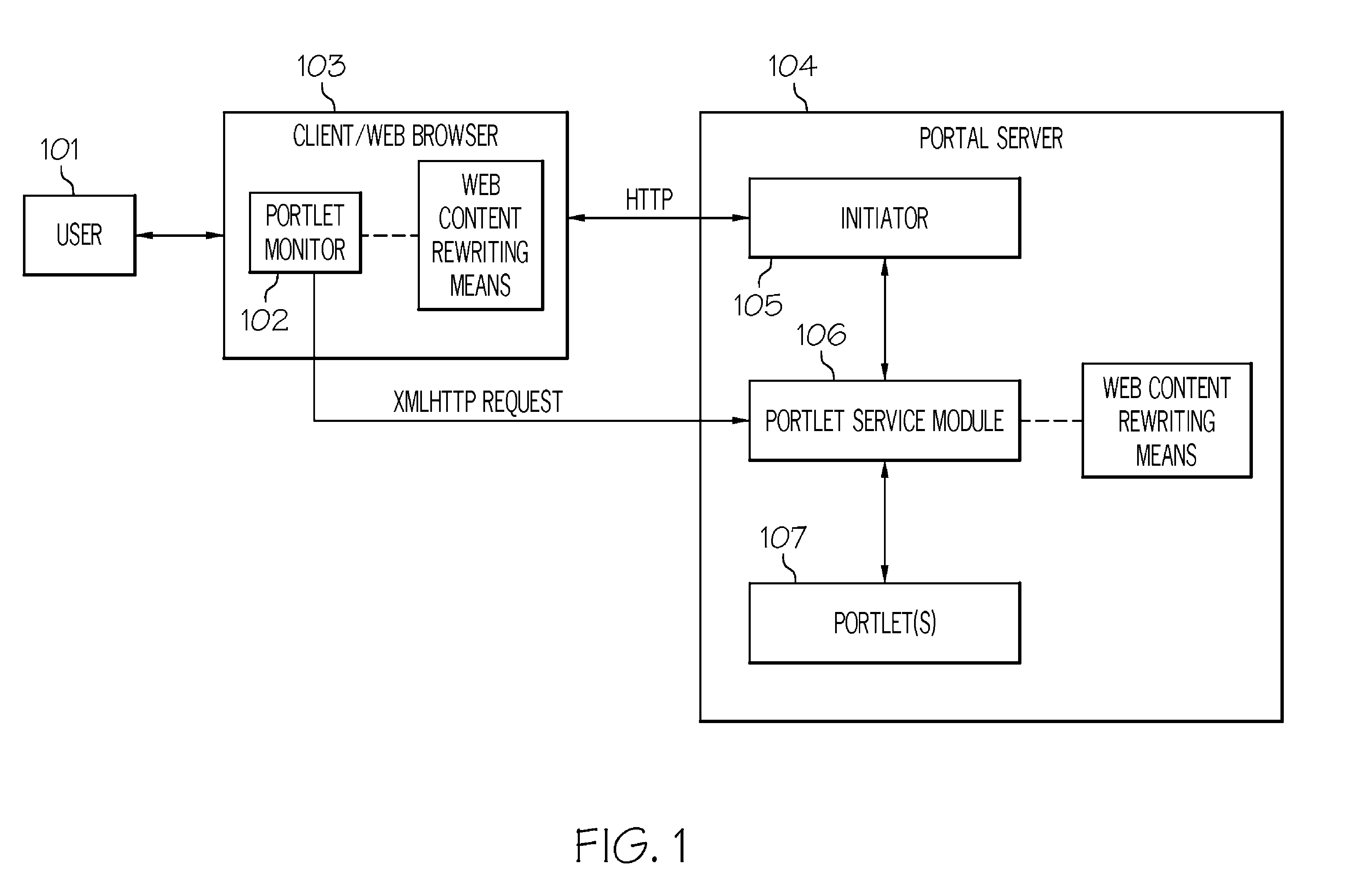Method and system for providing asynchronous portal pages
a technology of asynchronous portal pages and portal pages, applied in the field of portal technology, can solve the problems of not being able to send the web contents of other portlets in the portal page, wasting a lot of bandwidth, and not being able to achieve the effect of easy implementation
- Summary
- Abstract
- Description
- Claims
- Application Information
AI Technical Summary
Benefits of technology
Problems solved by technology
Method used
Image
Examples
Embodiment Construction
[0060]The present disclosure proposes a system for providing asynchronous portal pages. FIG. 1 and FIG. 2 show a block diagram of a portal system and a flowchart of a method for providing asynchronous portal pages, respectively, according to preferred embodiments of the present invention.
[0061]Now referring to FIG. 1, a portal system according to a preferred embodiment of the present invention is shown. As shown in the figure, the portal system comprises a portal server 104 and a client 103. The portal server 104 comprises three components, initiator 105, portlet service module 106 and one or more portlets 107. These portlets have been developed using programming models based on synchronous technology (such as JSR168). The client 103 comprises a portlet monitor 102 residents on a web browser. According to an embodiment of the present invention, the portal server 104 further comprises means for rewriting web contents (shown with dashed lines). According to another embodiment, the mea...
PUM
 Login to View More
Login to View More Abstract
Description
Claims
Application Information
 Login to View More
Login to View More - R&D
- Intellectual Property
- Life Sciences
- Materials
- Tech Scout
- Unparalleled Data Quality
- Higher Quality Content
- 60% Fewer Hallucinations
Browse by: Latest US Patents, China's latest patents, Technical Efficacy Thesaurus, Application Domain, Technology Topic, Popular Technical Reports.
© 2025 PatSnap. All rights reserved.Legal|Privacy policy|Modern Slavery Act Transparency Statement|Sitemap|About US| Contact US: help@patsnap.com



